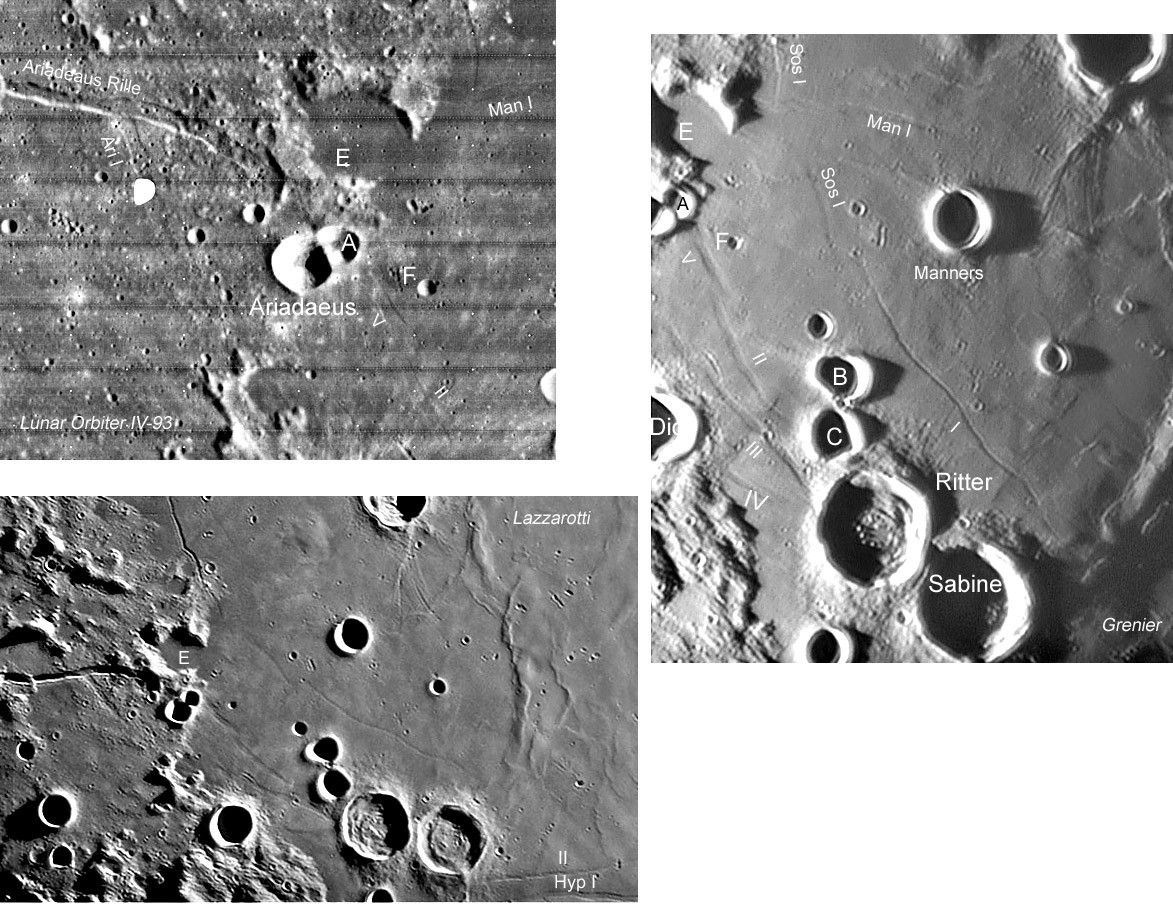
Lunar Orbiter image, Jérôme Grenier image, and Paolo Lazzarotti image - all from recent LPODs
Yesterday’s LPOD (upper left) showed the eastern end of the Ariadaeus Rille bending sharply southward before becoming lost in the ejecta of the strange crater pair Ariadaeus and Ariadaeus A (probably simultaneous impacts). Southeast of the pair is the faint, westernmost segment of the Ritter Rilles, labelled Ritter V in the old System of Lunar Craters map. An earlier, low-Sun LPOD by Jérôme Grenier (right) better displays the Ritter Rilles, and a yet earlier LPOD by Paolo Lazzarotti (lower left) shows how the Ritter Rilles probably connect with the Hypatia I Rille, but the area of interest is under Sabine and Ritter. I propose that the Ariadaeus Rille is the same structure as the Ritter V Rille, which continues, after an offset, as Ritter II, and that connects to Hypatia I. Furthermore, the short branch rille Ariadaeus I probably connects to Ritter III. The connection of the Ariadaeus Rille to the Ritter Rilles and then to the Hypatia Rilles argues very strongly that the Ritter and Hypatia rilles are not concentric rilles related to the sagging of Mare Tranquillitatis. But maybe this isn’t the entire length of this mega-rille structure. The west end of the Ariadaeus Rille connects to the Hyginus Rille, and a prolongation of the eastern end of the Hyatia Rille intersects the western end of the Guttenberg Rilles (and on to the Goclenius Rilles). This then is a series of roughly E-W rilles connected by a series of approximately NW-SE rilles (including the western length of the Hyginus Rille). The NW-SE segments are all about radial to the Imbrium Basin, and the E-W rilles may be tectonic connectors that somehow carried the basin-related stresses eastward. Wow!
Speculatively, Chuck Wood
Technical Details:
Lunar Orbiter image, Grenier image, Lazzarotti image.
Aren’t these old System of Lunar Craters rille numbers useful? Also, note the newly named Manners I Rille (visible in both Jerome’s and the Lunar Orbiter images) which marks the northern side of a broad lava flow (speculation) that cuts the Sosigenes I Rille into two pieces (observation).
Related Links:
Rükl plate 35
Now you can support LPOD when you buy ANY book from Amazon thru LPOD
COMMENTS?
Click on this icon File:PostIcon.jpg at the upper right to post a comment.



